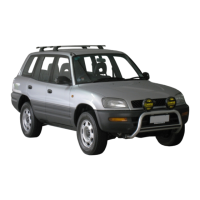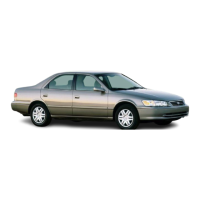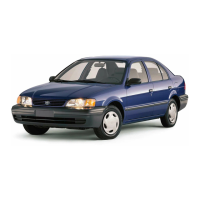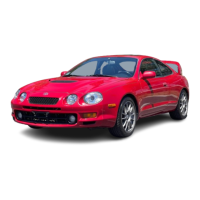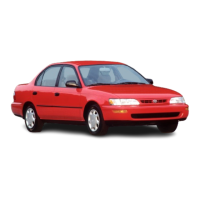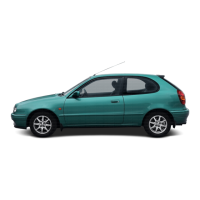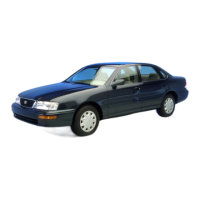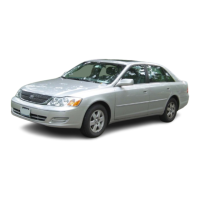26
1. SEAT POSITION AND SEAT CUSH-
ION HEIGHT ADJUSTING SWITCH
Move the control switch in the desired
direction.
Releasing the switch will stop the seat at
that position.
Do not place anything under the front
seats. It might interfere with the seat-lock
mechanism.
2. SEATBACK ANGLE ADJUSTING
SWITCH
Move the control switch in the desired
direction.
Releasing the switch will stop the seat-
back at that position.
CAUTION
!
To reduce the risk of sliding under
the lap belt during a collision, avoid
reclining the seatback any more than
needed. The seat belts provide maxi-
mum protection in frontal or rear col-
lision when the driver and the pas-
senger are sitting up straight and
well back in the seats. If you are re-
clined, the lap belt may slide past
your hips and apply restraint forces
directly to the abdomen. Therefore,
in the event of a frontal collision, the
risk of personal injury may increase
with increasing recline of the seat-
back.
3. DRIVER’S SEAT LUMBAR SUP-
PORT ADJUSTING LEVER
Pull the lever forward until you have
reached your desired position. To re-
duce the lumbar support, pull the lever
back toward its original position.
For your safety, adjust the head re-
straint before driving.
To raise: Pull it up.
To lower: Push it down while pressing the
lock release button.
You can also move the head restraint for-
ward or backward, pull or push the head
restraint.
The head restraining is most effective
when it is close to your head. Therefore,
using a cushion on the seatback is not rec-
ommended.
Head restraints
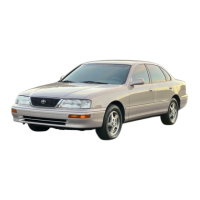
